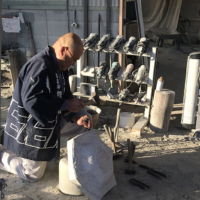In addition to just eating a plump one with a bowl of hot rice to improve digestion and settle your stomach, there are four basic condiment staples made with dried salt-preserved Japanese apricots (umeboshi). If you were ahead of the game and pickled your umeboshi this time last year, now is the time to reap the benefits of your labor. Prepared traditionally taking more time than work, umeboshi could really be the poster child for the slow food movement. These four offshoot preparations of umeboshi are no exception to this time intensity.
Yukari is made with the red shiso leaves used to flavor and imbue color to the umeboshi. Bainiku, umebishio and ume miso are created with the plump meat of well-pickled umeboshi.
Even if you didn't get around to doing your own last year there are very good umeboshi available for purchase. Some of the best I have found sit on the shelves of local shizen shokuhin-ya (natural food stores). Apricots pickled naturally are free of chemical preservatives and food colorings and have a smooth yet sharp tartness missing in excessively processed umeboshi. Commercial bainiku is available as well and may be used in making ume miso.


















With your current subscription plan you can comment on stories. However, before writing your first comment, please create a display name in the Profile section of your subscriber account page.